- Home
- Michael Duffy
Sydney Noir Page 4
Sydney Noir Read online
Page 4
Mick Phelan was no rare rotten apple. In his memoir, gangster George Freeman observed, ‘The coppers made their own rules in those days, and they weren’t necessarily the rules the mums and dads and politicians think about when they talk about stamping out crime. These coppers were bad coppers and they made bad rules. But they were respected. The newspapers wrote them up as heroes and super detectives.’47
The newspapers, like the courts, did indeed admire the police to an extraordinary degree. Sydney Noir could not have existed without this mass delusion, which in fact afflicted much of society. In crime stories the newspapers would even list the names of all the detectives working a case, as though reporting some event in the social pages. The following example, tacked on to the end of a crime story, is typical and contains the names of some heroes we shall meet again: ‘Detective sergeants Ray Kelly, F. Krahe, C. Wells, F. Smith and Wal Bailey, and Detectives M. Wild, N. Morey and R. McDonald, directed by the Chief of the CIB, Superintendent J. Gordon, are leading the search for the gunmen.’48
SHIRLEY IS ‘ON’ WITH MICK
Shirley Brifman had several relationships with policemen. She described the more durable of them as being ‘on’ with so-and-so. ‘I was on with Mick Phelan for three or four years,’ Brifman would recall. ‘He used to take me out to all the night clubs, to the Mandarin Club and the Latin Quarter, to Les Girls and we used to eat quite a lot at the French Restaurant in Taylor Square.’49
She might have remembered Phelan fondly, but their relationship was at bottom a transactional one. She paid him, he pimped for her. ‘Mick knew almost all the big business men and people connected with clubs, hotels, restaurants and so on,’ she said. ‘He was handing out my number to them. He also brought up a lot of his own personal friends. There were very many of them.’50
But despite the nights out, the free sex and the cosy business relationship, the weekly payments to Phelan of the Vice Squad didn’t guarantee Brifman total immunity from the police. Other policemen could and did take their cut of her earnings. ‘Detective Sergeant Sweeney charged me with soliciting at the Rex Hotel,’ she recalled. ‘Detective Nelson Chad came to the rescue; he met me in Central (Police Station) and raced me down the hallway so that my photograph was not taken (i.e. there was no photo to go on her police record). The next day I went to court and Sweeney gave the evidence and I got fined. Nelson said “I fixed it up for you”. Then he, Nelson, called at the Rex to see me and said I owed him a favour, as he had done one for me.’51 This is one of several incidents in her account that highlight the predatory, opportunistic and random nature of police corruption. It was not as centralised, or well organised, as has often been suggested.
After two years as a high-class bar girl at the Rex, Brifman was developing the contacts that would take her to the top of her profession. She was involved with both policemen and criminals; indeed, she became a link between the two worlds. In one incident a criminal contacted her to say that a mutual friend had been shot in the leg during in a robbery of a jeweller’s shop in Melbourne, and was coming to Sydney, where there was less of a hue and cry, in the hope that a doctor here would treat him. Could she help?
Brifman called in a nurse (Val Weidinger, one of her three fellow workers at Brisbane’s Killarney Hotel who had moved down to Sydney) who gave the wounded man injections to counter infection, and then started ringing around her criminal contacts – ‘knockabouts’ – to find a doctor prepared to treat the gunshot wound without reporting it. She had no success, even though ‘the price was going up all the time, two thousand (pounds) and five thousand (pounds)’.
The ‘knockabouts’ suggested Brifman try the police. Eventually a Detective Sergeant Harry Louis arranged an appointment with a doctor, a Macquarie Street gynecologist (probably known to police as an abortionist). The criminal’s leg was saved and everyone got the message: Shirley Brifman was a useful person to know.52
The term ‘knockabout’ was defined by Richard Hall in his 1986 book, Disorganized Crime . There were, Hall said, ‘two broad classes within the Australian criminal world: knockabouts – the shrewd professionals who survive – and the recidivists, who go back in (to gaol) again and again. Sometimes knockabouts have gone to gaol in the past and are in danger of doing so again, but the point is they are brighter, with less chance of getting caught and sufficient money to buy good lawyers to get them off or to pay off the detectives.’53
NOIR PARTNERS
Brifman’s relationship with Phelan was not unusual for one in her situation. ‘Karen’ recalled how she herself ‘had an affair with a policeman. In fact, lots of girls were having affairs with policemen. If you weren’t a favourite (of a policeman) it wouldn’t have been easy to work (because you would have been liable to constant arrest). The girls were all on with someone of importance and influence. Some of the top personalities of the time had girls from the Lanes’.
And prostitutes often had relationships with criminals: ‘A lot of girls were on with big-time crims,’ ‘Karen’ said. ‘After I broke up with the policeman I was on with a famous crim. He was married but I was his steady girl.’54
This underlines the point that despite being on opposite sides of the law, in the Golden Years police had more in common with most criminals than they did with ordinary people. The Noir world recognised this distinction with a special nickname for law-abiding citizens: ‘squareheads’.
It was a relationship between a prostitute and a policeman that provided the catalyst for ‘Bumper’ Farrell’s 1965 promotion to head of the Darlinghurst Vice Squad. Farrell’s predecessor in the job was Detective Sergeant Harry Giles, whom Shirley Brifman would later name as one of the police she had paid off.55 Giles’ lover was the prostitute and brothel madam Aileen Donaldson, twenty-five years his junior.
In 1963, Giles had set Donaldson up in a brothel in Palmer Street in the red-light precinct, and unsurprisingly, his Vice Squad avoided it. But, in yet another example of the unsystematic nature of corruption in Sydney Noir, other police decided to shut it down. The police who raided the premises found a photo of Giles there; Donaldson claimed that she herself didn’t know him, but that ‘Uncle Harry’ was a good friend of her mother’s.
In court, when it was put to Donaldson that Giles had selected a house for her to run as a brothel, that he had allowed her to operate brothels in the Darlinghurst area, and that he had supported her, she erupted: this was the ‘filthiest lie’ she had ever heard. (The claim that Giles ‘supported’ her may have been something of a sore point with Donaldson; because of her gambling addiction he kept her on a tight budget.) In a characteristic action, Donaldson then took an overdose of prescription pills, but survived.56
We can say ‘characteristic’ because in the Golden Years, suicide was more common than it is now. In Australia, suicide peaked in 1963: in that year the rate was 17.5 suicides per 100 000 people (in 2014 it was 12.2 per 100 000.57 ) Powerful pharmaceutical sedatives like barbiturates were more readily available than they are today; so the means of overdosing were more at hand.58
In the coronial files of the times, the words ‘ingestion of amyl-barbitone and quinalbarbitone self-administered whilst in a state of mental depression’ recur with chilling regularity. Celebrity overdoses had a ‘copycat’ effect: Marilyn Monroe died of an overdose of barbiturates in August 1962, and that month in the United States suicides increased by 12 per cent.59
Psychologists distinguish between suicidal gestures and suicide attempts. If someone takes an overdose and then alerts someone else to their action, or takes an overdose in the belief that someone else will soon find them, then psychologists characterise this as a suicidal ‘gesture’. The widespread availability of powerful sedatives in the 1960s facilitated such suicidal gestures, because compared to other forms of self-harm, like shooting oneself, the effects of overdosing could be reversed. Assuming that help reached the person soon enough. One Kings Cross policeman recalled the procedure when taking a certain type of phone call: the standard advice w
as ‘Don’t go anywhere, madam, just collapse on the spot and we’ll be right over’.60
ENTER ROBIN ASKIN: A MODERN POLITICIAN
In 1965, Robin Askin (he changed his name to Robert in 1971) had brought the Liberal Party back into government after twenty-four years in opposition. It was an impressive achievement similar to Gough Whitlam’s federal victory in 1972, which would end twenty-three years of opposition for the Australian Labor Party. In each case, the leader brought a party that had lost touch with reality back to the centre. Whereas federal Labor in opposition had moved too far to the left, the NSW Liberals had the opposite problem, dominated by endless infighting between the ‘aristocrats’ of Mosman and Vaucluse.
Somewhat surprisingly, there is no biography of Askin. The following relies heavily on a recent thesis mainly about Askin’s political career by Paul Loughnan, who kindly also discussed his subject with us at length.
Askin, born in 1907, was different to most Liberals. His father, a railway porter and later a tramway worker, and his mother were not married when he was born. He was brought up in Glebe, where he attended Glebe Public School. In 1917, his father lost his job and after the family was evicted from their home, father and son spent the night in a local park. These hard times didn’t stop Askin winning a bursary to the selective Sydney Technical High School, where he obtained his Intermediate Certificate.
Askin’s background – inner city, technically illegitimate, with the shadow of unemployment and eviction looming over the family – was similar to that of some of Sydney Noir’s criminals. The gangster Chow Hayes, for example, grew up on the same mean streets as Askin.
On leaving school Askin became a bank clerk and kept his job through the Depression, although he was placed on part-time work. He was a great reader, mainly of non-fiction, and like many future politicians was an avid joiner. He played sport, became a Mason, and was an enthusiastic office-holder in all sorts of amateur soci-eties, including a debating club, a swimming association, and the Rural Bank’s branch of the United Bank Officer’s Association. While climbing the conventional ladder, he also set up as a (part-time) SP bookie for fellow employees. This was not the aberrant behaviour it would later become. In those days, just about every workplace in the state had someone who performed that important and valued function.
In his memoir, High Climbers, one of Askin’s press secretaries, Geoffrey Reading,61 described the Askin family. There were three brothers, of whom one suffered neurological problems and died in an institution. The other, Tom, worked in the dead letter office at the General Post Office in the 1970s, and lived with his widowed mother in a housing commission flat in Surry Hills. Tom went home every day for lunch, and after he died they found scores of unopened pay envelopes lined up in a drawer.
In 1937, Robin Askin married Mollie Underhill, a typist at the bank, from a middle class family in the NSW south coast town of Bega. She was a champion swimmer, her father was secretary of the Associated Racing Clubs, the body that administered horseracing in the state. The young couple set up home in Fairlight, next to Manly.
In 1942, the thirty-five-year-old Askin enlisted and served in Papua New Guinea and Borneo, where he was promoted to sergeant and was the battalion’s SP bookie. After the war he became involved in the Liberal Party and, in 1950, was elected to the new seat of Collaroy, beating off nineteen other contenders for pre-selection. Of the sixteen new Liberal members of parliament, he was one of only three with a working class background. In fact, in those days two-thirds of Liberal members of parliament were gentlemen amateurs, who continued to work in business or the professions.
Askin worked hard at being a modern politician. He set up an electoral office – unusual at the time – and joined all the progress associations in his electorate, advocating for them in parliament. He became a very popular local member, with a reputation for the ability to engage with – and charm – a wide range of people. His working-class roots were helpful here, although they would later get him condemned as a class traitor by some in the notoriously touchy Labor Party.
His enthusiasm for the track was well known and to many endearing, at a time when tens of thousands of people from all walks of life attended the races. Following his entry into parliament in 1950, he had an account with one of Sydney’s biggest SP bookmakers, Crowley and Buckley, who operated out of a massive ‘fortress’ or call centre in Thomas Street, Ultimo.
Only four years later he was elected deputy leader. The Liberal Party was in disarray, with continuing disputes among its own members and with its coalition partner, the Country Party. The two parties could not agree on which seats each should go for, leading to many futile ‘three cornered’ electoral contests. Unsurprisingly, business did not want to fund what seemed to be the state’s permanent opposition.
Askin was elected leader in 1959 and things quickly changed. Fortunately for him, the Country Party had a new leader too, Charles Cutler, and Askin developed an excellent relationship with him, both men enjoying a bet and a beer. Askin also reached out to groups never before wooed by the Liberals. None was larger than the growing Catholic constituency, and in the 1965 election campaign he attracted many of their votes by supporting the policy of state aid to Catholic schools.
According to Paul Loughnan, there were two Liberal campaigns in the 1965 election, one run by the party machine and the other by Askin. The second was far more effective and relied on media mogul Sir Frank Packer and his employee Donald Horne, who used Packer’s incredibly popular outlets the Daily Telegraph and the Women’s Weekly to push Askin personally.
Horne’s slogan was: ‘With Askin you’ll get action.’ The launch of Askin’s campaign at the Sydney Town Hall, by Prime Minister Robert Menzies, was the biggest rally ever staged by the Liberal Party. The election campaign, which harped on law and order, was the most expensive the state had seen. Askin successfully elevated himself as a personality bigger than his party, a distinction he was to maintain for much of the next decade. To fund these personal campaigns required political donations, and required that they be kept out of the hands of the Liberal Party organisation, which wanted to divert them to Canberra for federal elections. As we shall see, this need for funds would contribute to the stories of Askin’s corruption.
Askin won the 1965 election with the biggest vote in the history of the NSW Liberal/Country Party Coalition. He had turned it from a coalition of the wealthy and farmers to one that many working people were now prepared to vote for.
Askin was fifty-eight when he became premier. As was common at the time, he took on the positions of Treasurer and Minister for Police. His relationship with the Country Party’s Charles Cutler continued to be positive, with Cutler later recalling, ‘One morning I went in (to Askin’s office before Cabinet), whistling, and Bob said, “Christ, I’ve had a bastard of a morning, I don’t know how you can always be as cheerful as you are. I’ve had such a bad morning; I feel like a drink.” I said, “Why not?” so he pulled out half a bottle of French wine someone had given him and we had that and went off to Cabinet. The following week I was back again and he had secretaries running all over the place, he was on the phone and this and that and I said, “For Christ’s sake, aren’t you going to shout!” He did and we continued that way for nine years.’62
Askin’s government waged a sustained campaign, through legislation and police action, against Sydney’s sex industry. This was probably not a matter of personal conviction: Geoffrey Reading tells the story of the Premier picking up a bar girl in the Texas Tavern, a Kings Cross bar owned by the CIA agent Bernie Houghton.63 But compared with SP betting, prostitution had only a small constituency, and there were votes – particularly Catholic votes – in being seen to suppress it.
Askin had the police target not only the working girls but also managers and owners of premises, for the offence of ‘Permitting Prostitution’. As had happened under Labor in 1962, the first Askin crackdown saw a temporary halt to business in The Lanes as prostitutes shifted into massag
e parlours or solicited from cars.64 But the initial Askin blitz was derailed by a 1966 court finding (Ex parte Fergusson, upheld by the Supreme Court in 1967) that determined that discreet immorality was not disorderly, and thus that the one-woman brothels of The Lanes were not illegal.
Askin proved a supporter of the police force, increasing its strength by 1050 (from 6691) over the next three years.65 He was a cautious reformer – like most successful Australian politicians – and an advocate of state rights against the Commonwealth, not least for the political opportunities this provided.
He was also a sharp operator. When the government forced Jørn Utzon to resign over cost blowouts to the Opera House, there was a storm of public protest. Askin’s publicity staff sought to counter it with fake letters to the editor – some of the more than 1000 such fakes published during his time in office, an average of almost one every three days.
Askin reduced the number of press conferences he gave and pushed controversial legislation through parliament late at night to miss the newspaper deadlines. He became adept at obfusca-tion and bullying, and mastered the technique of sidestepping a crisis by calling for a report from the minister or chief bureaucrat involved.
Where Askin did less well was with the young, particularly the growing numbers of university students, baby boomers who inclined increasingly to the left (or the New Left) in politics, and were shedding the conventions of their parents, compared with whom they were also more intellectual, more international in out-look (thanks to travel), and (thanks to the prosperous times in which they lived) more wealthy. Made confident by a prosperity they took for granted, they wanted to change the world and were increasingly impatient with the past and its representatives.
The grip of the churches was weakening: from the late 1940s to the late 1960s regular church attendance declined from 35 to 25 per cent. The Catholic Church sought to obstruct the ‘permissive’ society with the 1968 encyclical against birth control, but this was a losing battle.66 Nevertheless, the churches generally maintained their political influence throughout the Golden Years, united in their opposition to prostitution. The Catholic Church was notably less forthright in its condemnation of gambling, which it saw – unlike sex – as a preferable pastime for the blue collar workers who made up such a large percentage of its congregation.

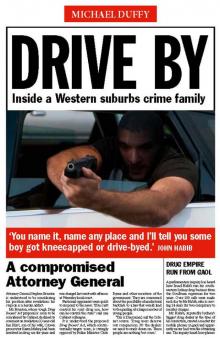 Drive By
Drive By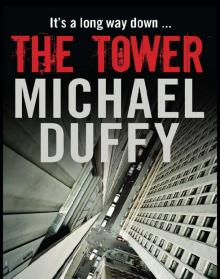 The Tower
The Tower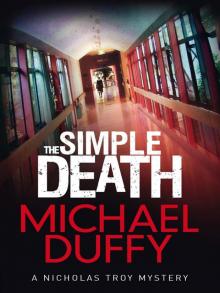 The Simple Death
The Simple Death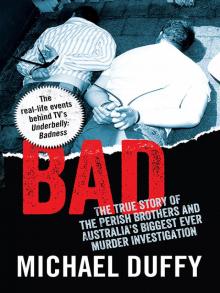 Bad
Bad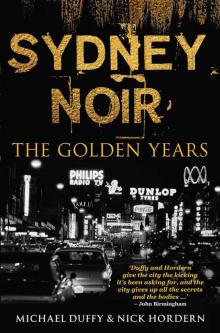 Sydney Noir
Sydney Noir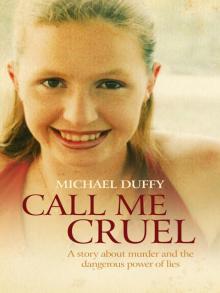 Call Me Cruel
Call Me Cruel